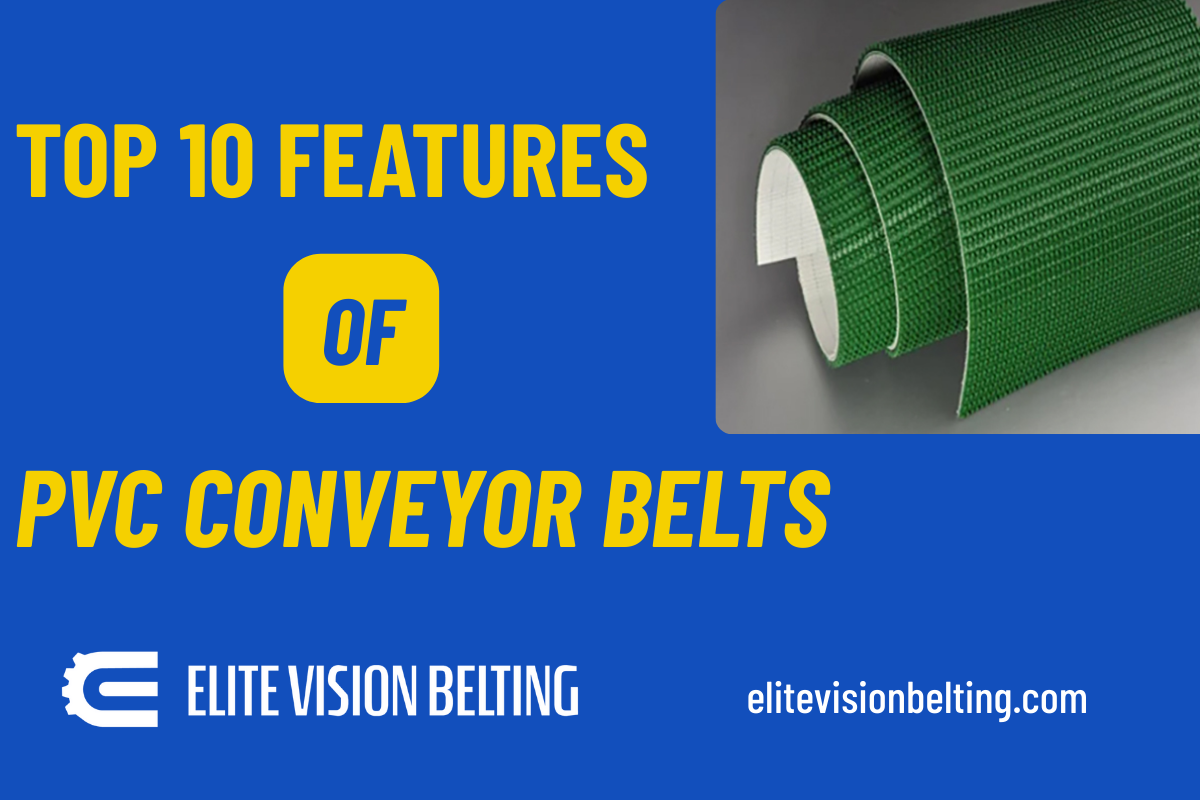Conveyor belts are essential to making, putting together, and maintaining gym equipment. A lot of the time, conveyor belts help companies that make fitness equipment run more smoothly and make sure that the construction processes are efficient and consistent. Conveyor belts help move parts, materials, and finished goods through the different production stages, whether for a stepper, a stationary bike, or a weight machine. The Elite Vision Belting Company (EVB) makes custom conveyor belts for businesses making exercise equipment.
The significance of Custom Conveyor Belts in Gym Equipment Manufacturing
Making workout equipment requires speed, accuracy, and durability. Since gym equipment is usually big and complicated, the parts must be able to be moved quickly from one step to the next. Custom conveyor belts address the specific difficulties of putting together exercise machines. For example, they move big or heavy things, ensure smooth changes between assembly lines, and lower the chance that a product will get damaged. Thoughtfully designed conveyor belt systems can increase output, lower production mistakes, and reduce labor costs.
Benefits of Custom Conveyor Belts in Fitness Equipment Production
- Enhanced Efficiency: Every production line needs a unique conveyor belt made just for it. This helps move things quickly and easily. For workers who don't have to move things by hand as much, they can focus on more significant work, which speeds up the whole production process.
- Improved Product Handling: Moving fitness equipment around should be done carefully to avoid damaging it. Custom conveyor belts can be made with padded surfaces, non-slip surfaces, and speeds that can be changed so that parts can be handled carefully. During the production process, this keeps the goods in great shape.
- Reduced Downtime: A well-designed conveyor belt system lowers the chance that something will break. Downtime is cut down by regular maintenance and making changes to fit the needs of gym equipment makers. This leads to higher productivity and lower operating costs.
- Customized Design Features: Custom conveyor belts can be made with features that meet the specific needs of gym equipment companies. Custom belts allow manufacturers to meet a wide range of production needs. They can be made wider to accommodate bigger parts, with special coatings for heavy-duty use, or with curved or inclined sections.
- Longer Lifespan: Because exercise equipment is usually made in large quantities and must be very consistent, custom-designed conveyor belts made of strong materials will make them last longer. Heavy loads, frequent use, and the needs of a busy manufacturing setting are all things that our conveyor belts are made to handle.
Key Design Considerations for Conveyor Belts in Fitness Equipment Assembly
Material Choice
The material used for the conveyor belt will significantly affect how long it lasts, how well it grips as well as how much wear it gets. Fitness equipment like treadmill motors, oversized steel frames, and plastic parts needs belts that can hold much weight as well as go fast without wearing out quickly. At EVB, we make custom conveyor belts from different materials, such as rubber, polyurethane, and PVC. All of these are made to handle the demands of making fitness equipment.
Belt Width and Length
The width and length of the conveyor belt must be the same as the pieces of exercise equipment being put together. When moving big things like treadmills as well as elliptical machines, the conveyor belt might need to be bigger to fit the parts. At EVB, we offer custom sizes so the belts fit perfectly in the assembly line plan. This lowers the chance of jams or problems with alignment.
Speed and Control
A production line works best when the speed of the moving belt is just right. Fitness equipment manufacturers often have to change the speed of the belt to match the speed of the people or tools putting the product together.
Load Capacity
They need a conveyor belt to move heavy parts of fitness equipment without breaking or bending. Depending on how heavy the moving parts are, one should carefully consider how much weight the conveyor belt can hold. For heavy loads, EVB makes custom conveyor tracks. This keeps the assembly line safe and smooth so that all parts of the fitness equipment, whether large or light, can move through it.
Custom Conveyor Belt Applications in Fitness Equipment Manufacturing
· Some heavy parts, like motors, belts, and frames, must be carefully lined up and connected when assembling a treadmill. Using custom conveyor tracks for putting machines together, these parts can move more easily, speeding up the process. It is designed so that the belts can hold heavy things and give them the proper grip while the machine parts move.
· Care must be taken when moving the heavy, bulky parts of exercise bikes and elliptical machines, like when driving a computer. It's easy to line up these tools and put them together because these conveyor belts have extra width, non-slip surfaces, as well as speeds that can be changed.
· Custom conveyor belts can also be used to assemble weight machines and package free weights. Large parts like steel frames or weight stacks can be moved with these belts, carrying the required weight. This ensures that parts get to the next step in the production process quickly and safely.
· Once the exercise equipment is put together, custom conveyor belts can also be used to ship and package it. The belts' role is to interchange complete goods to the area where they are packed, ensuring they get there safely and without damage. The conveyor belt system is essential in this phase, whether preparing equipment for shipping or setting up finished goods for final review.
The Elite Vision Belting Company makes unique conveyor belts for gym equipment companies. These belts improve speed, safety, and efficiency. Their solutions offer high load-bearing capacity, smooth movement of large parts, and accurate control of belt speed, which cuts down on downtime and keeps production standards high for fitness equipment.

.png)
.png)

.jpg)
